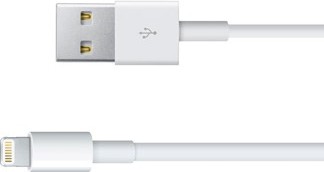We each have our own measure of value for everything in our lives, hence the famous saying "one man's trash is another man's treasure." So, why Apple and Costco? (P.S. those aren't the only two brands that do this.)
The main point is this - a large number of customers of these two companies have convinced themselves they're getting a good deal before they walk in the door.
Costco
At Costco you go in with a list of 10 things, but when you see the mega-pack of toothpaste you realize you're getting low and figure this has to be a good deal, sold. Ever think that the environment and decor wasn't just a warehouse because it is cheaper than a standard retail store? When you walk in and see the vast sea of products, the 100 TV boxes, and the 30 foot tall shelves full of the item you're buying, how could you not be getting a good deal since they bought THAT many of one item for a single store?In reality, you usually are getting a good deal. Not always, but rarely do the masses comparison shop Costco like they do at Best Buy (I call Best Buy the Tech Titanic). Recently, I found that Christmas lights were 1.8x the price for 1/2 the length strands for LED bulbs at Costco, they were selling like crazy none-the-less.
The warehouse look isn't the only thing. They put a ton of effort into doing the research for you, so when you go, there is ONE ketchup option to chose. Can you imagine if the grocery store only had one option? The perception of value is different - the grocery store provides value through a wide selection and reasonable quantity options. Costco provides value through bulk pricing and making your choice easy so you don't even have to stop the cart to buy ketchup, you merely slow down as you throw out your back picking up a gallon or two.
The point with Costco is that they hit the nail on the head for making their customers understand the value they provide. Most anyone at Costco walks in the door expecting to spend hundreds and hundreds of dollars and will even laugh when they get to check out and cheer "I did it for less than $400!" (I actually heard that once). The value they're getting isn't being measured by dollars first, so damn the expense, put it on the famous Costco AmEx!
Apple
Albeit an entirely different industry (I'm not sure if Apple has any plans for iKetchup, but I somehow doubt it), Apple is very much the same way with how their products are perceived.Side note: Apple is a polarizing topic, and many people have blindly 100% dismissed Apple products as a bad deal no matter what, just like some have blindly 100% accepted their products as a good deal no matter what. These are closed minded people and most of them fall under the "troll" category.
Apple demonstrates their value through their famous product introductions (among other ways). The demonstrations are simple, clean, well documented by the press, and like their products, they are polished... freakishly well polished. Apple demonstrates their value through simplicity. Their products have changed the way society views buttons, they have reshaped industrial design as we know it, and to date there really isn't another product that is mistaken for an Apple product (crappy Chinese knock offs do not count). Apple demonstrates their value through ubiquity. Their products are understood, most anyone can navigate one (even if they never have before), their accessory market is larger than any other by a long shot. Recently they changed their dock connector, so that is a small (but totally necessary) setback for their accessory market, but they've been establishing that market with 10 years of compatibility, that's huge.
So when people are quick to point out why Apple products are expensive and they start comparing technical specs, they've already missed the point by a long shot. That person measures value differently than Apple and Apple has no interest in marketing to them. Tech specs simply aren't what matters to Apple. As Matt Drance points out (highlighted by John Gruber), "It's no coincidence that the 'Tech Specs' link atop apple.com/iphone is dead last."
Does that make people who measure tech specs wrong? No. I think tech specs have their place, and as a geek I have a deep appreciation for them. However, Apple has done a good job of showing why the product experience is more valuable than the tech specs for their products, and that is just something not everyone will agree on. No worries.
What this means is that just like Costco, people walk into an Apple store expecting to spend money because money isn't the most important thing in how they're determining the value of the products. Their perceived value of Apple products is just higher than other products. It is a reason why their product margins are higher than competition. The people who don't understand why people pay what they pay are the people who either don't know enough to understand that perception of value, they're too closed minded to accept it, or they genuinely don't put value in what Apple does.
It is a very interesting phenomenon, but is nothing new and not unique to Apple in any way. The way Apple could become unique is if they are able to survive the life-cycle that every other company in history has fallen victim to. Only time will tell.












